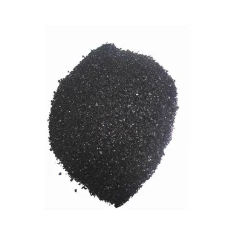famous sulfur dyes
The World of Famous Sulfur Dyes
Dyes have been an integral part of human civilization, providing color to textiles and fabrics for centuries. Among the myriad of dye types, sulfur dyes have gained prominence due to their unique properties and vivid colors. This article explores the fascinating realm of famous sulfur dyes, highlighting their characteristics, applications, and significance in the textile industry.
What are Sulfur Dyes?
Sulfur dyes are a class of dyes that are derived from sulfur-containing compounds. They are known for their ability to produce bright and stable colors, especially in dark shades. The key feature of sulfur dyes is their insolubility in water in their original form. However, during the dyeing process, they first dissolve in a sulfide solution and then penetrate the fibers of the material. Once the dye has been absorbed, it reacts with oxygen in the air, turning into a pigment that attaches firmly to the fiber, which makes it resistant to washing and light.
Famous Sulfur Dyes
Two of the most recognized sulfur dyes are black sulfur dye and yellow sulfur dye
.1. Black Sulfur Dye Black is one of the most sought-after colors in the textile industry, making black sulfur dye extremely popular. This dye has outstanding fastness properties, which means that garments dyed with black sulfur dye maintain their color integrity even after many washes. Black sulfur dye is commonly used in denim production, workwear, and other functional garments where durability is essential.
2. Yellow Sulfur Dye Yellow shades are vital for creating a wide range of colors through mixing. Yellow sulfur dye is known for its brightness and excellent light fastness. It is widely used in various textile applications, including clothing, upholstery, and home textiles, allowing manufacturers to produce vibrant printed and dyed fabrics.
Advantages of Sulfur Dyes
famous sulfur dyes

The growing popularity of sulfur dyes can be attributed to several advantages they offer compared to other dye types
- Cost-Effectiveness Sulfur dyes are generally less expensive than reactive or vat dyes. Their affordability makes them a preferred choice for manufacturers looking to minimize production costs without compromising on color quality.
- Environmental Impact While the dyeing process of sulfur dyes requires certain chemicals, the overall ecological footprint of sulfur dyeing can be lower than that of some alternative dyeing methods. Efforts are continually underway to improve the environmental aspects of dye production and application.
- Color Fastness Once cured on the fabric, sulfur dyes exhibit excellent wash, light, and rub fastness, which is essential for many end-use textiles, especially in industrial applications.
- Versatility Sulfur dyes can be applied to many types of fibers, including cotton, polyester, and blends. This versatility makes them valuable in an industry that constantly seeks innovative dyeing solutions.
The Dyeing Process
The dyeing process using sulfur dyes involves several steps. First, the textile is pre-treated to ensure even dye application. Then, the dye is solubilized using sodium sulfide or sodium hydroxide. The dyeing takes place in a dye bath, where the fabric is immersed. After dye application, the material is oxidized to convert the soluble dye into its insoluble pigment form. Finally, any remaining unreacted dye is removed through washing, and the dyed fabric is then dried.
Conclusion
Famous sulfur dyes have carved out their niche in the textile industry due to their bright hues, durability, and cost-effectiveness. As a staple in fabric dyeing, these dyes continue to innovate while responding to environmental concerns. With the ongoing advancements in dye chemistry and application processes, sulfur dyes will likely remain a key player in the world of textiles, providing the colors that consumers desire while supporting sustainable practices. As we move forward, the role of sulfur dyes will undoubtedly evolve, but their foundational significance in dyeing remains timeless.
-
The Timeless Art of Denim Indigo Dye
NewsJul.01,2025
-
The Rise of Sulfur Dyed Denim
NewsJul.01,2025
-
The Rich Revival of the Best Indigo Dye
NewsJul.01,2025
-
The Enduring Strength of Sulphur Black
NewsJul.01,2025
-
The Ancient Art of Chinese Indigo Dye
NewsJul.01,2025
-
Industry Power of Indigo
NewsJul.01,2025
-
Black Sulfur is Leading the Next Wave
NewsJul.01,2025

Sulphur Black
1.Name: sulphur black; Sulfur Black; Sulphur Black 1;
2.Structure formula:
3.Molecule formula: C6H4N2O5
4.CAS No.: 1326-82-5
5.HS code: 32041911
6.Product specification:Appearance:black phosphorus flakes; black liquid

Bromo Indigo; Vat Bromo-Indigo; C.I.Vat Blue 5
1.Name: Bromo indigo; Vat bromo-indigo; C.I.Vat blue 5;
2.Structure formula:
3.Molecule formula: C16H6Br4N2O2
4.CAS No.: 2475-31-2
5.HS code: 3204151000 6.Major usage and instruction: Be mainly used to dye cotton fabrics.

Indigo Blue Vat Blue
1.Name: indigo blue,vat blue 1,
2.Structure formula:
3.Molecule formula: C16H10N2O2
4.. CAS No.: 482-89-3
5.Molecule weight: 262.62
6.HS code: 3204151000
7.Major usage and instruction: Be mainly used to dye cotton fabrics.

